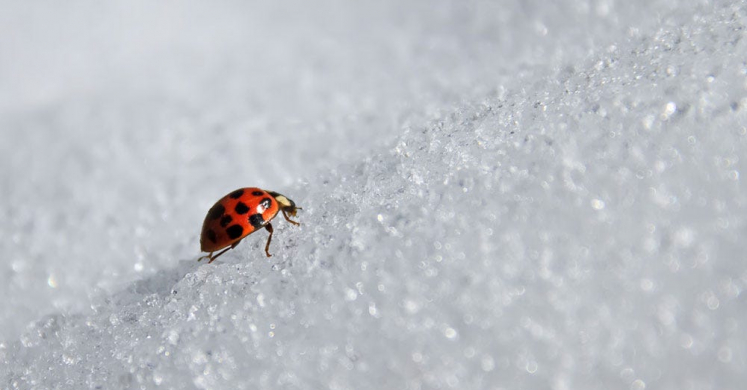Blog

#bioPGH Blog: What Happens to Insects After These Warm Days?
 A resource of Biophilia: Pittsburgh, #bioPGH is a weekly blog and social media series that aims to encourage both children and adults to reconnect with nature and enjoy what each of our distinctive seasons has to offer.
A resource of Biophilia: Pittsburgh, #bioPGH is a weekly blog and social media series that aims to encourage both children and adults to reconnect with nature and enjoy what each of our distinctive seasons has to offer.
Thank you to Phipps IPM Specialist Braley Burke for her assistance with this post!
Tuesday evening, before the rain started, it was quite warm outside. I opened the windows in my home and rolled up my hoodie sleeves to take in the wildly unseasonable weather. A flaw in that plan that I hadn’t anticipated was…bugs. Tiny gnat- and midge-like insects, along with a few larger flies, buzzed, hummed, and fluttered around in the light in my sunroom. I shouldn’t have been as surprised as I was, given the weather; but insects just weren’t on my mind in late February. Did you encounter any too? Have you ever wondered about when insects emerge in the winter for a warm day, what happens to them when the temperatures go back down? The short answer is they may go back to overwintering behaviors and be fine, or they may encounter a little chilly trouble. Let’s take a closer look!
To properly frame the question, first we need to explore how insects spend their winters. There are some whose life cycles end before winter begins, of course; but of those who overwinter as adults, their strategies vary widely across insect families and species, but there are a few commonalities. Insects may:
- Overwinter underground
- Overwinter in leaf litter, under bark, in little nooks of trees or logs, etc.
- Overwinter as eggs, larvae or pupae in any of the noted hiding spots in specialized forms of dormancy
Adult insects overwintering in some sort of hiding spot, whether above or below ground, usually enter some sort of dormant state, where their metabolisms’ sharply drop to save energy. One such dormancy state is called quiescence. Roughly comparable to bird and mammalian torpor, quiescence is “a short period of dormancy that is directly induced by adverse conditions and can be quickly reversible when favorable conditions return,” as described by Iowa State extension. This dormancy is often triggered by a combination of environmental cues.
The insects I saw on Tuesday probably ended their dormant state in part due to the surprisingly warm temperatures from this week. (We can also probably note that that insects would have been overwintering in leaf litter and those who remain underground generally don’t experience as wide of temperature fluctuations as those exposed to air.) But when temperatures return to a more seasonal range, will the insects be ok? The short answer is…probably. Most will probably return to a dormant state and reemerge when it is seasonally appropriate. Some insects, though, could find themselves rapidly burning through energy that they can’t replace. When insects emerge early, like the ones in my backyard this week, they face the risk that their food sources are unavailable. No flowers are blooming to offer nectar, fruits aren’t in season and there is little vegetation for a leafy green dinner. If an insect emerges on warm days like this week, and they are active for too long, they might burn through their energy reserves before spring resources are available.
Luckily, though, this won’t be the fate of all insects emerging early, and some cooler temperatures should put them back on track for their normal seasonal behavior. So while a warm day can certainly be enjoyable, the chilly days this time of year are important too!
Resources
Iowa State Extension - Survival Effects of Fluctuating Temperatures on Insects
Iowa State Extension - What Does This Warm Winter Mean for Insects?
NC Cooperative Extension - Warm Winter Weather Stimulates Insect Emergence and Growth
Nebraska Extension - How Do Insects Survive Winter?
Smithsonian Mag - Where Do Insects Go in the Winter?
Photo credits – Cover, Diane Hammond, CC BY-NC-ND 3.0 DEED; header, Pexels

